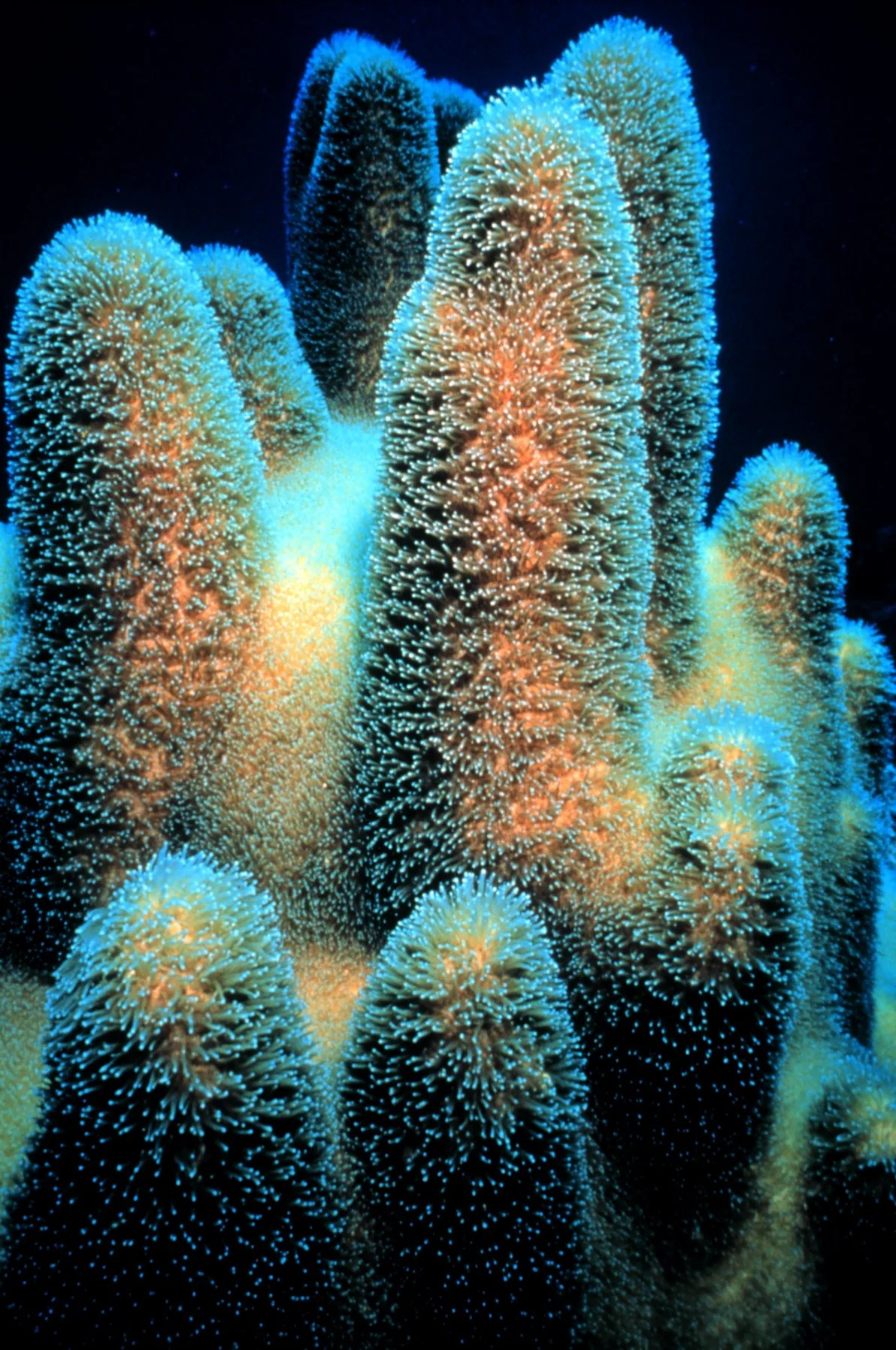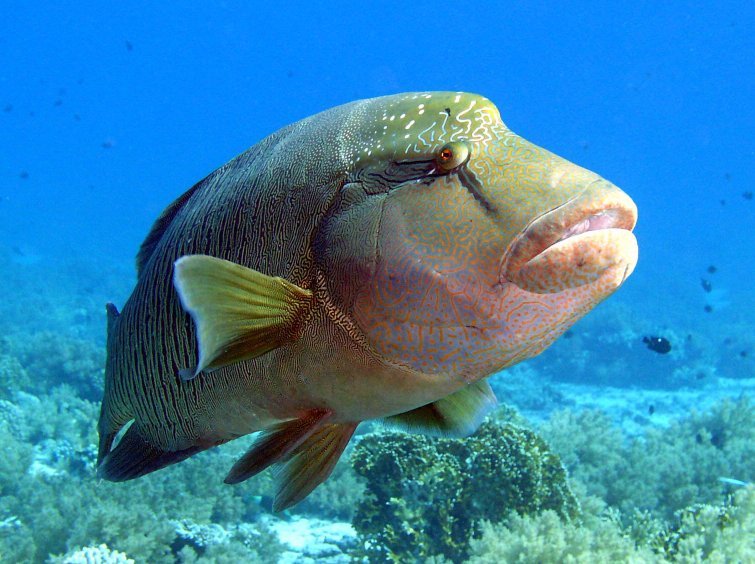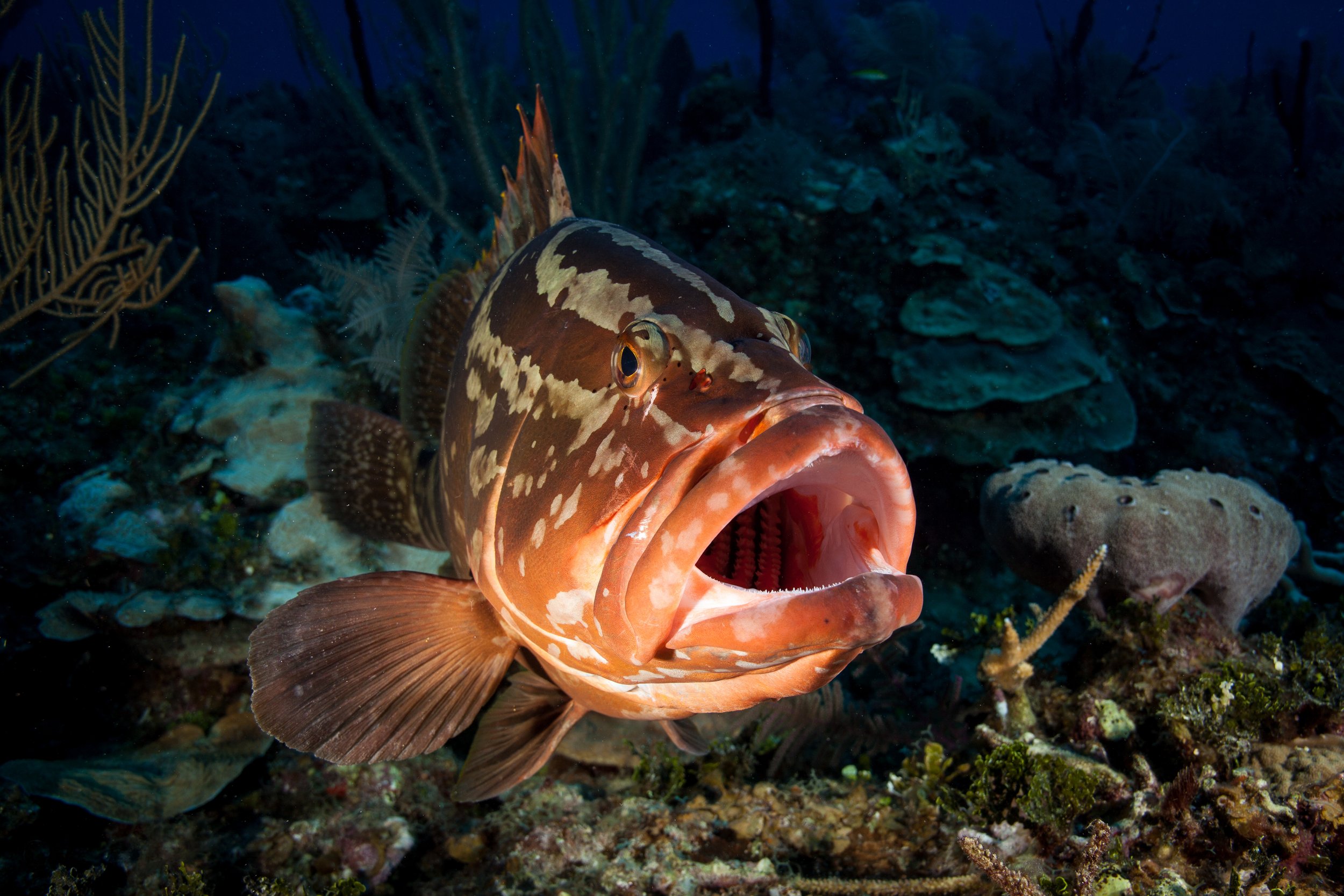
Coral Reefs
Florida's coral reef habitat is one of the most diverse and ecologically significant marine ecosystems in the United States. Located primarily along the southeastern coast of Florida, it encompasses parts of the Florida Keys, the Florida Reef Tract, and the surrounding waters of the Atlantic Ocean and Gulf of Mexico. This reef system is the only living coral barrier reef in the continental United States and is part of the larger Caribbean coral reef ecosystem.
The Florida reef system supports a remarkable diversity of marine life, including a wide range of coral species, fish, invertebrates, and other marine organisms. It's estimated that over 45 species of stony corals can be found in these waters, creating intricate and colorful underwater landscapes.
Florida's coral reef habitat has substantial economic significance for the state's tourism, fisheries, and recreational industries. Snorkeling, scuba diving, sport fishing, and boating activities attract visitors from around the world, contributing to local economies.
Despite its ecological importance, this ecosystem faces numerous challenges, many of which are linked to human activities. These challenges include coral bleaching due to rising sea temperatures, pollution from runoff and sewage, overfishing, coastal development, and impacts from recreational activities. These stressors have led to coral degradation and reduced biodiversity in some areas. Efforts are underway to conserve and restore Florida's coral reef habitat. Conservation initiatives include establishing marine protected areas, implementing sustainable fishing practices, reducing pollution, and promoting responsible tourism. Coral restoration projects involve techniques such as coral gardening, where fragmented corals are grown and transplanted back onto damaged reefs.
Scientists and researchers actively study the reef ecosystem to better understand its dynamics, threats, and potential solutions. Educational programs also play a role in raising awareness about the importance of reef conservation and encouraging responsible behavior among visitors and locals.
Types of Coral
In Florida's coral reef habitat, several types of coral species can be found. These corals are of immense ecological importance as they provide critical habitats for a wide range of marine species, contribute to the overall health and diversity of the reef ecosystem, and support local economies through tourism and fisheries. The coral reefs of Florida are made up of a variety of hard and soft corals, including brain coral, elkhorn coral, staghorn coral, and sea fans. These corals provide a habitat for a wide range of fish species, including groupers, snappers, parrotfish, and angelfish. In addition to fish, the coral reefs of Florida are also home to a variety of invertebrates, such as lobsters, crabs, and shrimp.
The importance of these coral species in Florida's reef habitat cannot be overstated. They create the physical structure of the reefs, provide shelter and breeding grounds for countless marine species, support local economies through tourism and fisheries, and contribute to overall ecosystem health. However, these corals are facing significant challenges due to climate change, pollution, disease, and other human-related impacts. Conservation efforts, including coral restoration projects, marine protected areas, and sustainable management practices, are critical to ensure the survival and recovery of these vital coral species and the ecosystems they support.
Elkhorn Coral(Acropora palmata)
Elkhorn coral is a large, branching coral that forms complex structures resembling elk antlers. It was once one of the most dominant and important reef-building corals in the Caribbean and Florida. Its rapid growth and interconnected branches provide important shelter and habitat for many marine organisms. Elkhorn coral has been severely impacted by disease, bleaching, and other stressors, leading to its decline and listing as a threatened species under the U.S. Endangered Species Act.
Staghorn Coral (Acropora cervicornis)
Staghorn coral is another branching coral species that plays a significant role in building and maintaining the structure of the reef. Like elkhorn coral, staghorn coral has been heavily impacted by disease and other stressors, leading to its listing as a threatened species. Efforts to restore these corals involve propagation and transplantation techniques.
Brain Coral(Acropora palmata)
Various species of brain corals, including lobed, star, and boulder brain corals, are found in Florida's waters. These corals have large, rounded structures and intricate ridges, which create shelter and habitats for numerous fish and invertebrate species.
Fire Coral (Millepora spp.)
Fire corals are not true stony corals but belong to a different group known as hydrocorals. They are named for their sharp, stinging cells that can cause skin irritation to humans. Fire corals contribute to the reef ecosystem by creating three-dimensional structures that offer habitats for small fish and invertebrates.
Pillar Coral (Dendrogyra cylindrus)
Pillar coral is a slow-growing coral species that forms large, cylindrical structures. It's known for its distinctive appearance and is an important habitat for various reef organisms. Pillar coral populations have also been impacted by disease, hurricanes, and other stressors.
Star Corals
Various species of star corals, including symmetrical and starlet corals, are present in Florida's reef ecosystem. These corals have a star-like appearance and provide vital habitats for fish, invertebrates, and other marine life.
Fish and Invertebrates
Florida's coral reef habitat supports a diverse array of fish and invertebrate species, each playing unique roles within the ecosystem. These species rely on the corals and other components of the reef for food, shelter, and breeding grounds.
Fish
Parrotfish: Parrotfish are herbivorous fish that play a vital role in maintaining the health of the reef ecosystem. They graze on algae that can overgrow corals, helping to prevent smothering and maintaining the balance of the reef.
Angelfish: Angelfish are known for their vibrant colors and striking patterns. They feed on a variety of foods, including algae, sponges, and small invertebrates. Some species of angelfish also play important roles in controlling the growth of algae on the reef.
Groupers: Groupers are predatory fish that inhabit reef environments. They play a significant role in the food web by controlling the populations of smaller fish and invertebrates.
Snappers: Snapper species, such as the mutton snapper and yellowtail snapper, are commonly found around coral reefs. They are important both for their ecological role and as valuable targets for recreational and commercial fishing.
Hogfish: Hogfish are colorful reef-dwelling fish known for their unique feeding behaviors and appearance.
Gobies: Various species of gobies, such as the neon goby, inhabit reef crevices and contribute to the ecosystem by controlling parasites.
Triggerfish: Triggerfish species like the queen triggerfish can be found around coral reefs, and they play a role in shaping the reef through their feeding habits.
Wrasse: Wrasse species, including the bluehead wrasse, are common inhabitants of Florida's coral reefs. They help control populations of small invertebrates and parasites.
Invetebrates
Sponges: Sponges are filter-feeding organisms that play a role in nutrient cycling on the reef. They provide habitats for small invertebrates and are often a food source for certain fish.
Shrimp: Various species of shrimp inhabit the reef, including cleaner shrimp that form symbiotic relationships with larger fish by cleaning parasites and dead tissue from their bodies.
Crabs: Crabs can be found on the reef, occupying crevices and holes in the coral structure. Some species play roles in nutrient cycling and may scavenge for food.
Sea Stars: Sea stars, or starfish, are predators that feed on small invertebrates and can have an impact on the population dynamics of these organisms.
Sea Anemones: While not true corals, sea anemones can be found in Florida's coral reef habitat, providing shelter for various fish and invertebrate species.
Brittle Stars: Brittle stars are echinoderms that inhabit the reef substrate and play roles in scavenging and nutrient cycling.
Sea Cucumbers: Sea cucumbers are bottom-dwelling organisms that help to break down organic matter on the reef.
Fireworms: These segmented worms can be found on the reef and play various ecological roles, including scavenging and predation.
Endangered Species Living in Coral Reefs
Elkhorn Coral
Goliath Grouper
Green Sea Turtle
Staghorn Coral
Loggerhead Sea Turtle
Humphead Wrasse
Queen Conch
Hawksbill Sea Turtle
Ridley Sea Turtle
Nassau Grouper
Smalltooth Sawfish





















